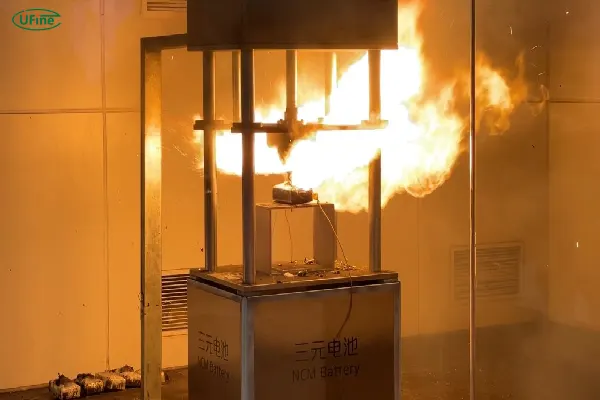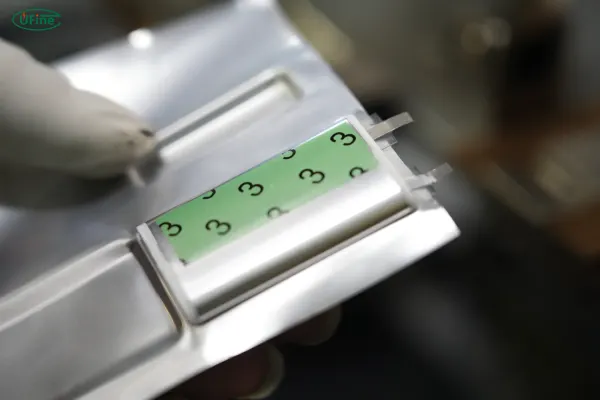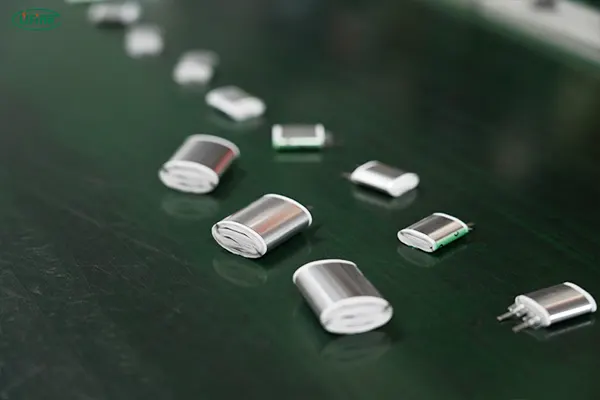The issue of lithium battery fires, particularly with Li Polymer (LiPo) and Li-ion batteries, has been gaining more attention in recent years as these batteries are widely used in everything from consumer electronics to electric vehicles (EVs), drones, and even renewable energy storage. While these batteries offer tremendous benefits in terms of energy density and lightweight designs, battery fires remain a concern for both consumers and manufacturers alike.
With over 17 years of expertise in custom battery solutions, Ufine Battery has helped countless customers across the globe with safe, high-quality lithium battery packs. In this article, we’ll explore the truth behind lithium battery fires, including what causes them, how to prevent them, and how to safely use LiPo and Li-ion batteries.
Part 1. Understanding the causes of lithium battery fires

Lithium batteries, including Li-ion and LiPo types, are generally safe when used correctly. However, under certain conditions, they can pose serious risks, including fires or explosions. According to a study by the National Fire Protection Association (NFPA), lithium battery fires caused an estimated 300 fires per year in the United States alone.
The causes of lithium battery fires can be traced back to several key factors:
- Thermal Runaway: One of the main causes of fires in lithium batteries is thermal runaway, which occurs when a battery’s internal temperature rises uncontrollably due to overcharging, overheating, or internal damage. Once thermal runaway occurs, the battery can catch fire or even explode.
- Short Circuits: If a battery’s internal components come into contact with conductive materials, a short circuit can occur, causing excessive heat buildup that may lead to a fire. This is especially dangerous in LiPo batteries, which have softer casings that are more prone to physical damage.
- Overcharging and Overheating: Charging a lithium battery beyond its safe voltage can result in internal chemical reactions that may cause fires. Overcharging can be exacerbated by faulty chargers or poor-quality batteries that lack overcharge protection.
Ufine Battery ensures that all LiPo and Li-ion batteries undergo rigorous safety tests, including charge/discharge cycles and temperature stability tests, to prevent such issues. Contact us today for a custom battery.
Part 2. LiPo batteries: why are they more prone to fires?
While Li-ion and LiPo batteries share many similarities, LiPo batteries are often considered more prone to fire for a few reasons. Here’s why:
- Gel-Based Electrolyte: LiPo batteries use a gel-based electrolyte or solid polymer electrolyte, which makes them more flexible and lightweight. However, this gel-like material can react more easily to physical damage, swelling, or punctures compared to the liquid electrolyte found in Li-ion cells. As a result, if the pouch casing is damaged, it can lead to short circuits, thermal runaway, and subsequent fire.
- Soft Pouch Casing: The flexible pouch casing of LiPo batteries means they are more susceptible to crushing, puncturing, or swelling under extreme conditions. When this happens, the internal cell components may come into direct contact with each other, causing a short circuit or chemical reaction that results in fire.
- Lack of Rigid Protection: Unlike Li-ion batteries, which are typically encased in hard metal or steel casings, LiPo batteries lack that rigid protection. This makes them more vulnerable to external damage during transport, storage, or usage.
A study from IEEE Spectrum highlighted that LiPo batteries in drones are significantly more prone to fire during crashes due to their less durable packaging and higher internal pressure during flight. At Ufine Battery, we ensure that our LiPo batteries meet rigorous safety standards and are equipped with necessary protective features to mitigate these risks.
Part 3. Battery protection mechanisms
While LiPo batteries do present a fire risk under extreme conditions, modern designs include several safety mechanisms that greatly reduce the likelihood of a fire. Here are some of the most important safety features:
- Battery Management System (BMS): A BMS is a crucial component for monitoring and regulating the voltage, current, and temperature of the battery pack. The BMS will shut down the charging process if it detects overcharging, overheating, or cell imbalance, which prevents the battery from reaching dangerous conditions that could lead to fire.
- Temperature Sensors: Many advanced LiPo packs feature temperature sensors to monitor heat buildup within the battery. If the temperature exceeds safe limits, the BMS or the charger will automatically stop the process.
- Overcharge and Over-discharge Protection: High-quality LiPo and Li-ion batteries come with protection circuits that automatically cut off power to the battery in the case of overcharge or over-discharge, both of which can compromise the battery’s safety and lifespan.
- Fireproof Cases: In high-end applications like electric vehicles (EVs) or solar power storage systems, the use of fire-resistant enclosures helps to reduce the potential damage caused by battery failure or fire.
At Ufine Battery, we ensure that all our custom LiPo battery packs are equipped with a BMS and other protective measures to ensure safe and reliable performance.
Part 3. Lithium battery fire: myths vs. reality
There are many myths circulating about lithium battery fires, and separating fact from fiction is crucial for both consumers and manufacturers. Let’s look at some of the most common misconceptions:
Myth 1: “All lithium batteries will catch fire.”
Reality: While battery fires do happen, they are rare when proper usage protocols are followed. According to UL, a global safety certification company, only a small percentage of lithium batteries experience issues like thermal runaway or fire. Ufine Battery and other reputable manufacturers incorporate safety features like BMS (Battery Management Systems), temperature sensors, and overcharge protection to ensure that risks are minimized.
Myth 2: “If my battery is swelling, it’s going to catch fire immediately.”
Reality: Swelling of a LiPo battery is a sign of overcharging or aging, but it does not necessarily mean it will catch fire. However, swelling does indicate that the battery is no longer safe to use and should be replaced immediately. Never ignore a swollen battery, as it poses a potential risk if left unchecked.
Myth 3: “LiPo batteries are inherently more dangerous than Li-ion batteries.”
Reality: LiPo batteries do have unique risks due to their softer casing and gel electrolyte. However, Li-ion batteries can also catch fire if overcharged, punctured, or improperly handled. The key is proper care, usage, and maintenance. Ufine Battery uses advanced safety protocols to manufacture safe, reliable batteries of both types.
Part 4. What happens if your lipo battery catches fire?
If a LiPo battery catches fire, it’s critical to know how to respond. These batteries can burn very hot, with temperatures exceeding 1,000°C in extreme cases, which can lead to significant property damage and serious injury. Here’s what happens in a fire situation:
- Release of Toxic Gases: As the battery burns, it releases highly toxic gases such as hydrogen fluoride (HF), which is harmful to both humans and the environment.
- Explosion Risk: If the fire or overheating causes a rupture in the cell’s casing, the pressure can cause an explosive event, which can result in projectile debris, further amplifying the danger.
- Difficult to Extinguish: LiPo fires are difficult to extinguish using conventional fire-fighting techniques. Special Class D fire extinguishers, which are designed for metal fires, are required to put out such fires.
Part 5. Preventing lipo battery fires: best practices
To prevent battery fires, proper usage and maintenance are essential. Here are some best practices for safely using LiPo batteries:
- Use Quality Batteries: Always choose high-quality LiPo or Li-ion batteries from trusted manufacturers, like Ufine Battery, that meet international safety standards.
- Charge Carefully: Only use approved chargers for your specific battery type. Avoid overcharging by ensuring that the charger is compatible with the battery’s voltage and current limits.
- Monitor Battery Temperature: Always check the temperature of the battery during charging and discharging. If the battery becomes excessively hot, stop using it immediately.
- Proper Storage: Store batteries in a cool, dry place and use fireproof storage bags when charging or transporting LiPo batteries.
- Dispose of Damaged Batteries: Never use batteries that are swollen, punctured, or damaged. Dispose of them properly at certified battery disposal centers.
Part 6. Final thoughts
LiPo batteries and Li-ion batteries do present a fire risk if misused, but this can be minimized with proper care, quality control, and safety mechanisms like BMS. The reality is that the number of battery fires relative to the number of lithium batteries in use is low, but understanding the risks and following safety protocols is essential for anyone using these batteries.
At Ufine Battery, we pride ourselves on providing high-quality, custom battery solutions with built-in safety features designed to minimize the risk of fire and maximize performance. With 17 years of experience in the field, we remain committed to innovation, quality, and most importantly, safety.
If you’re looking for a custom battery solution, whether for consumer electronics, electric vehicles, or renewable energy storage, Ufine Battery offers tailored Li-ion and LiPo battery packs with advanced safety features. Contact us today for more information on how we can help you power your next project safely and reliably.
Related Tags:
More Articles

How to Choose the Best Floor Scrubber Battery for Commercial Cleaning?
Selecting the ideal floor scrubber battery ensures a long runtime, rapid charging, and minimal maintenance for efficient commercial cleaning operations.
Battery for Blower vs Battery for Leaf Vacuum: Which One Should You Choose?
Battery for blower vs leaf vacuum—learn the key differences in power, fit, and runtime to choose the right battery for your outdoor tool needs.
How to Choose the Right Battery for Blower?
Choosing the right blower battery? Consider voltage, capacity, chemistry & usage. This guide helps match the best battery for peak performance.
How to Choose the Best Insulated Battery Box for Lithium Batteries?
Choosing the Best Insulated Battery Box for Lithium Batteries? Discover key factors such as size, material, and safety for optimal protection and performance.
7 Critical Elements on a Lithium Battery Shipping Label
What must be on a lithium battery shipping label? Learn 7 key elements to ensure safety, legal compliance, and correct handling across all transport modes.





